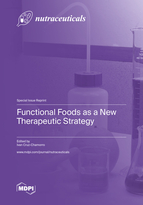Modulating the Gut Microbiota with Alginate Oligosaccharides In Vitro
 Rakesh Sharma
Rakesh Sharma
Round 1
Reviewer 1 Report
the authors should take my comments below into account.
Major comments:
The abstract is very general, it should be closer to the results obtained in this study
The introduction only depictsdifferent effects of AOS but lack of the general conclusion of the probiotic effects of AOS
Lack of donor information such as age, biological sex or healthy status, lack of the original gut composition of the three donors.
Detailed comments:
Abstract:
Line 35-36“The dynamics of the microbiota community was determined using Illumina-based 16S gene amplicon sequencing” not necessary
Materials and Methods:
Please supplement the detailed product information of AOS, such as the content, impurity concentration.
Line 132 Faecal sample preparation.Did you pool the fresh stool samples together or separately dissolved in solution? Four to five samples of each treatment were shown in fig4 that makes me confused.
Results:
The relative abundance should be placed before the diversity analysis
Discussion:
The biggest flaw of discussion is lack of correlation analysis of the single strain results and the microbiota composition. The whole part is more like an explanation of results than a logical discussion. What did the single strain results imply and correlate with complex microbial structure? I recommend a thorough revision of the discussion.
Author Response
Major comments:
The abstract is very general, it should be closer to the results obtained in this study.
Thank you for this suggestion, we have modified the abstract to more specifically reflect the findings of our study.
The introduction only depicts different effects of AOS but lack of the general conclusion of the probiotic effects of AOS Lack of donor information such as age, biological sex or healthy status, lack of the original gut composition of the three donors.
We agree that more background information on the donor could have been helpful with the interpretation of the results. However, the ethical approval did not allow us to collect such data; samples were collected anonymous. We have explained this in further detail in the text.
Detailed comments:
Abstract:
Line 35-36 “The dynamics of the microbiota community was determined using Illumina-based 16S gene amplicon sequencing” not necessary
We have removed this sentence as suggested
Materials and Methods:
Please supplement the detailed product information of AOS, such as the content, impurity concentration.
We have added further information on the AOS as requested.
Line 132 Faecal sample preparation. Did you pool the fresh stool samples together or separately dissolved in solution?
The samples were not pooled but treated individually. We have clarified this in the manuscript.
Four to five samples of each treatment were shown in fig4 that makes me confused.
Simulations were run in quadruplicate this has been presented in a new Figure 4 (now Figure 3) and explained in the Figure legend. Thank you for highlighting this.
Results:
The relative abundance should be placed before the diversity analysis
We have changed the order of the two sections as suggested.
Discussion:
The biggest flaw of discussion is lack of correlation analysis of the single strain results and the microbiota composition. The whole part is more like an explanation of results than a logical discussion. What did the single strain results imply and correlate with complex microbial structure? I recommend a thorough revision of the discussion.
We have more clearly correlated the results from the single strains with the in vitro colon simulation results, to the extent possible. We have also otherwise revised the discussion.
Reviewer 2 Report
The manuscript entitled “Modulating the gut microbiota with alginate oligosaccharides in vitro” is written well and explains all the experimental details along with the results in clear and concise manner. The introduction is sufficient, and the results and observations were clearly mentioned, which makes the reader to repeat the experiment and understand the conclusion. However, the following points maybe taken care of during the manuscript revision.
Relative abundance of microbes was in donor-dependent manner. The authors have described few points in the discussion section, however some more discussion points can be incorporated. As for inulin, the relative abundance of bacteria was different in all the cases but for alginate it was almost similar. Similarly, in the case of donor 1, AOS did not increase the number of Bacteroides while alginate was able to do so. These differences may be discussed keeping earlier literature in mind and thus, clearly explained in comparison to other donors. There might be some other parameters including the physical or chemical and other experimental conditions, which could be considered to explain this difference.
Author Response
The manuscript entitled “Modulating the gut microbiota with alginate oligosaccharides in vitro” is written well and explains all the experimental details along with the results in clear and concise manner. The introduction is sufficient, and the results and observations were clearly mentioned, which makes the reader to repeat the experiment and understand the conclusion. However, the following points maybe taken care of during the manuscript revision.
Relative abundance of microbes was in donor-dependent manner. The authors have described few points in the discussion section, however some more discussion points can be incorporated. As for inulin, the relative abundance of bacteria was different in all the cases but for alginate it was almost similar. Similarly, in the case of donor 1, AOS did not increase the number of Bacteroides while alginate was able to do so. These differences may be discussed keeping earlier literature in mind and thus, clearly explained in comparison to other donors. There might be some other parameters including the physical or chemical and other experimental conditions, which could be considered to explain this difference.
We have tried to discuss the wider body of literature on the donor specificity of AOS and alginate degradation by the human microbiota.
Round 2
Reviewer 1 Report
Please carefully check the article again to avoid any improper expression before publication.





